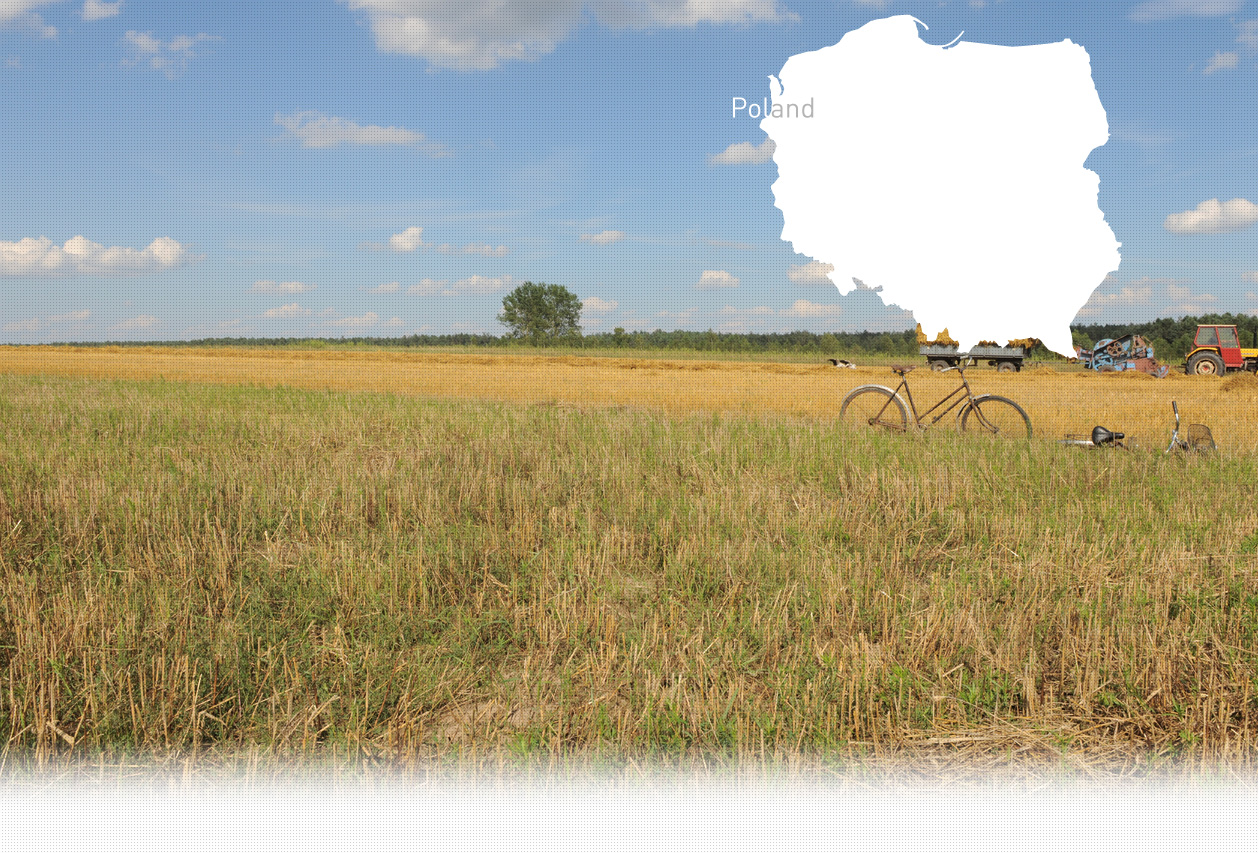

1 Killing site(s)
Adam J., born in 1927: “My parents were farmers, and my father also worked at Kurland’s mill, delivering flour to local bakeries. Kurland was Jewish—his daughter was named Rózia. Back then, about half of Kłobuck’s population was Jewish, mostly traders. I went to school with Jewish children and remember families like the Lapides, Gielkob, Rypshtein, and Libicki. At the start of the war, Jews could still move freely. Later, a ghetto was established around Długosza Street, near the synagogue and the river. It wasn’t fenced, but Jews weren’t allowed to leave, and German patrols with dogs watched the area. They wore yellow stars on their arms. Before the ghetto was liquidated, many Jews tried to escape to the General Government. A boy my age and his mother from the Rypshtein family came to us—they had traded meat with us before the war. We hid them in our attic for a few weeks and gave them food. At night, they could come down. There was a forest path toward Pierzchno, with a river marking the border. My aunt managed to cross it with the Rypshteins.” (Witness N°1136P, interviewed in Kłobuck, on November 28, 2019)
Kłobuck is a town in southern Poland, located in the Silesian Voivodeship, about 15 km northwest of Częstochowa. It serves as the capital of Kłobuck County. Historically, Kłobuck belongs to Lesser Poland and is situated in its northwesternmost corner, near the border with two other historical regions: Greater Poland and Silesia.
In 1850, Kłobuck was home to 460 Jews, comprising 25% of the town’s population. A year later, in 1851, a synagogue was built and a rabbi appointed. A Jewish cemetery was also established around that time.
By 1931, the town had a population of 8,952 residents, of whom 1,652 identified as Jewish. Most members of the Jewish community lived in the so-called "Old Town," which was also the center of local trade. The town had active trade guilds, including those of butchers, blacksmiths, locksmiths, and carpenters/joiners. Markets were held every other Wednesday and were popular among residents from surrounding villages and towns.
The Kłobuck Jewish religious community also included Jews from the nearby village of Kamyk. By 1927, the community maintained a synagogue on Bóżnicza Street, a mikveh, a cheder (religious school), and a fenced cemetery.
Between 1923 and 1939, many young Jews left Kłobuck for larger cities or emigrated to Palestine and other countries. By 1937, the Jewish population in the municipality had grown to 2,001.
German troops entered Kłobuck on September 2, 1939, following a brief skirmish. Fifteen Jews were killed during the initial occupation. The synagogue was desecrated and converted into a stable, while Jewish property was looted and confiscated. Shortly afterward, the Jewish population was rounded up and held in a church, where they were forced to help extinguish fires caused by the invasion. In the days that followed, Jews were subjected to daily forced labor, including the exhausting task of pulling heavy, loaded wagons.
Beginning on September 15, 1939, Jews were required to wear white armbands bearing a yellow Star of David. Within a few months of the occupation, the German authorities established a Judenrat (Jewish Council) and a Jewish police force (Jüdischer Ordnungsdienst). In June 1940, the Judenrat was ordered to provide 140 Jewish men, aged 18 to 30, for forced labor in Germany. These men, from Kłobuck and nearby towns, were sent to labor camps in the Reich. Additionally, another labor camp for young Jewish men was established near Kłobuck.
Since Kłobuck had been incorporated into the territory of the Third Reich and the border with the General Government lay just a few km away, some local Jews were able to flee across the border during the occupation.
In October 1941, all Jews in Kłobuck were forced to relocate to a designated part of the town where a ghetto had been established. Sources vary on the number of inhabitants: some estimate that around 1,500 Jews were confined to the ghetto, while others suggest that only 60 to 65 Jewish families lived there—approximately 300 to 500 people. The ghetto was not enclosed by a fence, but a curfew was enforced, and German guards occasionally patrolled the area.
Overcrowding, malnutrition, and poor sanitary conditions led to a typhus epidemic that claimed many lives. During this period, at least one group of about 20 Jews was executed by the Germans at the Jewish cemetery.
The liquidation of the ghetto began on June 21, 1942. That day, the German Kreiskommissar, accompanied by Gestapo agents with dogs and a unit of the Sosnowiec Jewish police, arrived in Kłobuck. All ghetto residents were rounded up and taken to the local fire station. There, the guards released dogs and opened fire on the crowd, killing an undetermined number of people. Those deemed fit for labor were selected and sent to labor camps in the Reich. A group of 25 young women and one man were sent to a labor camp in Sosnowiec. A few skilled workers and their families were temporarily left behind in what became known as the “small ghetto” in Kłobuck.
The remaining Jews were taken by train to the synagogue in Kuznica, a few km from Kłobuck, where they were joined by Jews from neighboring areas. From there, they were deported—ultimately to extermination.
The “small ghetto” was liquidated in June 1943. Its remaining inhabitants were held at the police station for several days before being deported by train to the Blechhammer labor camp.
Approximately 100 Jews from Kłobuck are believed to have survived the war. However, the Jewish community was never reestablished.
Do you have additional information regarding a village that you would like to share with Yahad ?
Please contact us at contact@yahadinunum.org
or by calling Yahad – In Unum at +33 (0) 1 53 20 13 17